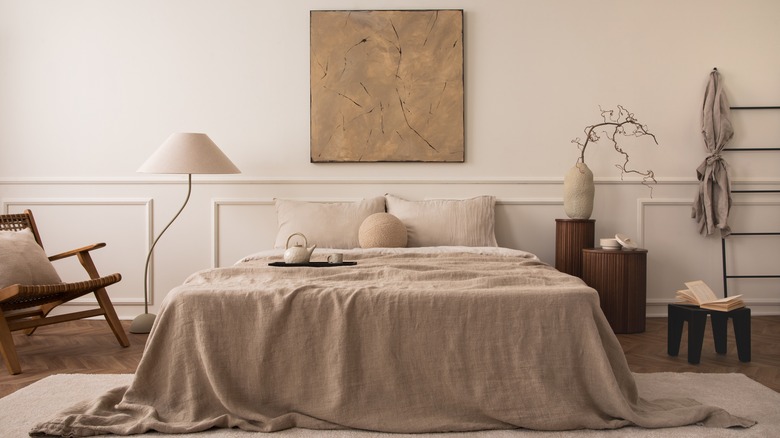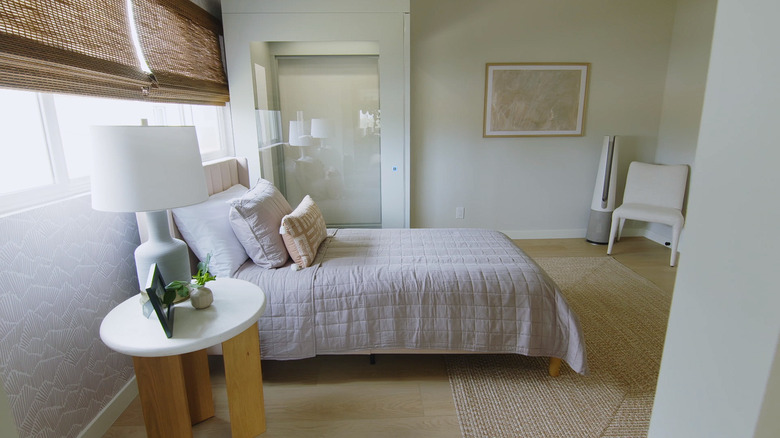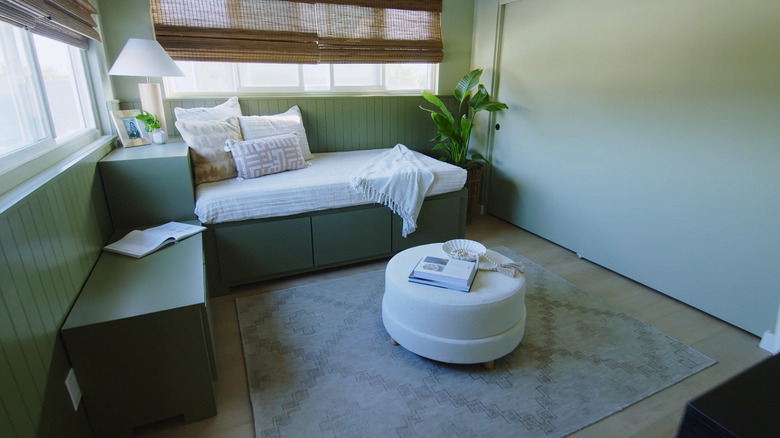HGTV's Jasmine Roth Swears By This Perfectly Imperfect Decor Style
In the second episode of season four of HGTV's "Help! I Wrecked My House," "Second Chances," host Jasmine Roth returns to the Seal Beach, CA home that was recently her first foray into Japandi design. The homeowners needed help with their second floor but found themselves immobilized by choices and the fear of making a mistake. Roth said Japandi is the right answer for the owners again. "I'm going to lean into what Japandi is all about, the beauty of imperfection," Roth said in the episode. "To them, what it means is that you're leaning into the imperfections of a house in the design."
Consider the story of Rikyu, a Zen monk who set out to perfect the garden of a famous tea master from whom he hoped to learn. Having cleaned and raked the garden to a flawless state, the monk understood what was needed and shook cherry blossoms from a garden tree onto the ground. This touch of chaos completed his work. Embedded in the Rikyu story is the intuitive understanding that mere perfect order can be made more beautiful when paired with carefully selected disorder. It is fundamental to the idea of wabi-sabi, which in turn can help you grasp how to use Japandi style in your home.
What makes it Japandi?
There's a natural affinity between Scandinavian and Japanese interior design principles, both of which value natural materials and light, simplicity, lack of clutter, tranquility, and the pleasures of function. Scandi interiors bring less geometry and more blond wood to the party, while Japanese design is more likely to emphasize the architecture itself, particularly in the near-seamless transitions between indoor and outdoor spaces. Japan also contributes wabi-sabi, the idea of locating beauty in the imperfect and the impermanent. Not just finding the beauty but cultivating it, as in the art of Kintsugi, in which broken pottery is mended with lacquer and gold dust, and the cracks and flaws are transformed into the locus of the piece's beauty.
But reading descriptions of the style might not fully communicate its beauty and effect because, in action, Japandi has a decided "you won't know it until you see it" quality. It's remarkable to look at a series of photos featuring these interiors, such as the @japandi.interior Instagram account. One could be forgiven for calling the overall effect "monochromatic." Japandi interiors pull almost all their hues from the neutral palette, drawing contrast mostly from darker neutrals and, occasionally, black. The overall effect of seeing a few dozen Japandi rooms on a page is so unrelentingly neutral that the occasional green of a houseplant or blue of the sky through a window is striking. But actually occupying such a space is anything but dull.
A Japandi interior of your own
Bringing this style to the Seal Beach home's second floor was a challenge, Roth said, because the spaces were more personal. Making design personal can be difficult using any well-defined school of design, but remember that any stumbling blocks or imperfections created along the way are part of the Japandi ethos. Roth's "Second Chance" design included lessons that can help you plan a peaceful space tailored to your needs. The younger daughter's bedroom, for example, became a fun atmosphere by virtue of furniture organized for entertaining friends. The green used in the room is more saturated than you'd normally see in Japandi, but in keeping with the colors you'd decorate with for a Scandinavian aesthetic. Your design should solve problems, not get in the way. Choosing functional elements with intention is fundamental to the Japandi approach.
You can introduce contrast with darker hues with staircases, doorways, and exposed beams, and with easier-to-replace items like seating and lighting or plumbing fixtures. Plants can add a pop of color, as can a window with a view of a tree or landscape. A holistic view keeps you from overpowering the room with clutter or statement pieces; subtle textures from textiles and rugs can be fully appreciated up close but contribute to the whole, from a distance, as texture. Remember that texture is often imperfection, whether on the surface of unglazed pottery, rough-sawn wood, or a concrete floor; look for the beauty in it.


